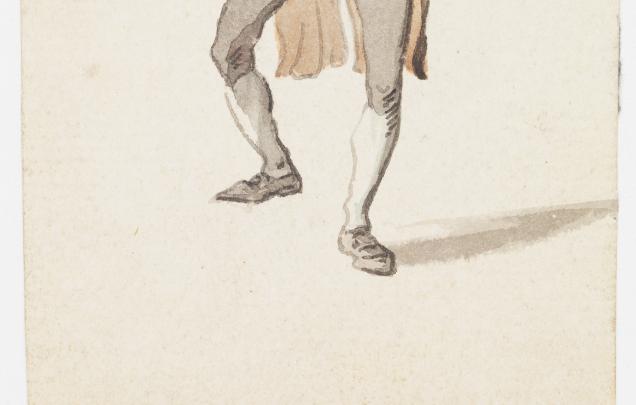Feet on the Ground
Students explore how shoes became an issue for everyone from the First Fleet.
This is the student activity 1 of 7 of the Convict clothing learning activity.

Feet on the Ground
Shoes in England at this time in history were made from leather and handsewn. Shoes belonging to ladies could also be made from fabric. The First Fleet convicts were issued with shoes by the British Government prior to their journey.
Look at the example of women’s shoes, below. This image reveals one of the styles of shoes worn by working class women in England in the 1790s and most likely convict women on the First Fleet in 1788.




- Two shoe buckles in two different images.
- Broken shoe with toes poking out! (If his shoe has already worn out before he left England, he might a have a tough time in New South Wales when he gets there!)
- Shoes with two flaps hanging off! (For those men, shoelaces were desperately needed! Our shoes today look similar to that if we take the shoelaces out.)
Did you know? Even though shoelaces had been used for thousands of years, the first shoelace patent – including aglets - was not taken out until 27 March 1790?
Define the word: aglet
It turned out that shoes were a big problem for the whole colony of NSW and not just the convicts.
Read the following quotes:
Surgeon John White in April 1788 observed men,
having their shoes torn from their feet through the ruggedness of the road along which we had travelled.
Second Lieutenant Newton Fowell wrote to his father in July 1788 to complain,
how very short I am of shoes.
Governor Arthur Phillip’s wrote in September 1788 that the clothing was wearing out, particularly,
the shoes, which do not last a month.
Captain Watkin recorded in April 1790 that whilst doing their guarding duty there were a,
number of soldiers without shoes.
If the soldiers had no shoes then the convicts were worse off! Convicts' shoes had been through so much onboard ship; the sea water flooding the floors; the spills from the bucket with human waste and vomit; the washing of animal waste through the floor of the hold and then when they arrived in NSW there was hard labour to be done. If your shoes fell apart there may not have been any replacements and if you were lucky enough to receive shoes they may not have been in your size!
Did you know? There was a convict shoemaker on the First Fleet so there was someone with the skills to make shoes but not the materials or even perhaps the tools.
Did you also know? A convicted criminal in England boarding the First Fleet on 5 March 1787 was found to have a knife hidden in his shoe and received a dozen lashes! Later, on the Third Fleet, the Dublin Chronicle of 17 March 1791 reports that Irish convicts embarked with,
spring saws concealed in their hair, and between the soles of their shoes, for the purpose of sawing off their irons. This strategem was discovered by one of the convicts having on a very old pair of shoes, and the saw was discovered through the openness of the sole. A general search was then made, and upwards of 200 convicts had saws found on them.
If that one convict had not been wearing an old pair of shoes, the Third Fleet’s journey to NSW may have had a very different outcome!
Watch the animation about shoes, below.
Design some convict shoes to last! Think about comfort, sturdiness and use. Is there a secret compartment? What would you hide in the shoe? Does any part of the shoe have a dual purpose?